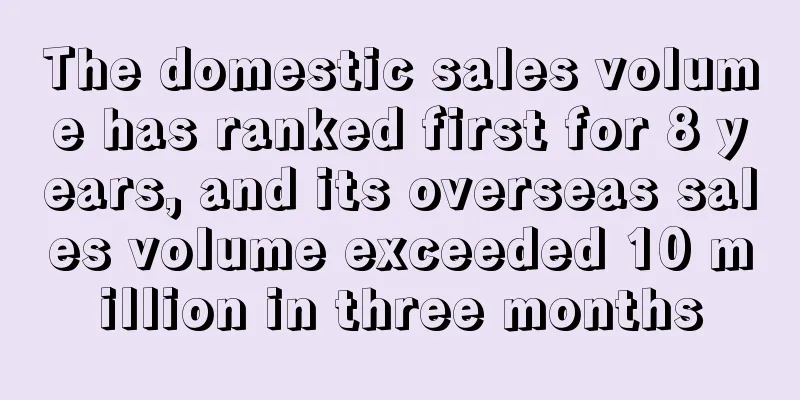Prime Day sales have dropped significantly? What are the sellers' coping strategies?

|
The first Prime Day of 2021 has come to an end. With the normalization of the epidemic, will buyers' shopping desire continue to rise? How is the sales growth of sellers? What changes will sellers face after Prime Day? Today, I will lead you to do an overall review: From a macro perspective, sales have increased slightly this year, with kitchen home furnishings becoming the focus. According to data from Amazon's product selection tool AmzChart, during the 2021 Prime Day event, Amazon's global sales reached US$11.19 billion, a year-on-year increase of 7.6%! Although sales have increased compared to last year, the upward trend has obviously calmed down compared to the 45% year-on-year increase last year. On the one hand, the reason is that as the epidemic has become normalized, users have gradually adapted to the current situation and their enthusiasm for online shopping has cooled down. On the other hand, the market share of independent stations and other platforms has increased slightly recently, and sales have been dispersed. Judging from the distribution of hot-reviewed categories (first-level categories) during Prime Day, the Home & Kitchen category stood out, with the total number of product reviews under the category increasing by more than 1.2 million. This shows that even though the resumption of work orders in various countries are progressing in an orderly manner, buyers' consumption focus is still on home and kitchen supplies. In addition to Home & Kitchen , categories such as Sports & Outdoors, Clothing, Shoes & Jewlery, and Electronics, which were popular categories on Prime Day in previous years, are still on the list. However, Industrial & Scientific, which performed relatively mediocrely on Prime Day in previous years, has risen to the third place. According to the data source information of Amazon's product selection tool AmzChart, the best-selling products in the category are concentrated on epidemic prevention materials such as masks, filter elements, and thermometers, and the growth of reviews is concentrated on June 21-22. It can be seen that under the implementation of the resumption of work order, users intend to take advantage of this promotion to stock up on epidemic prevention materials.
Seller sales : Experienced sellers are stable with some growth, while small sellers are mostly running behind. In previous years, Prime Day has more or less shown some polarization, and this Prime Day is no exception. Since sales data is highly correlated with BSR ranking, observing BSR ranking can reflect sales to a certain extent. From the Prime Day warm-up period to the end of the event, the BSR of the top-ranked products in each first-level category did not fluctuate much, which basically reflects the situation that sales are stable with some growth:
However, the situation for some novice sellers is not optimistic. Many sellers reported that their sales volume has not changed much compared with usual. Some sellers even had to run with Lin Dan almost throughout Prime Day. The most tragic thing is that the increase in sales volume is not as fast as the increase in Acos, and this situation is not accidental. According to the feedback from the more active sellers in each group, although the orders have increased, the advertising costs have increased more, which makes people feel that they have made a lot of money in vain. The fundamental reason for the surge in Acos is the increase in the number of sellers. In order to obtain more display opportunities and weight, sellers have raised their advertising bids one after another, but some sellers have not reasonably optimized their listings. In the current era of product information explosion, users will not choose to buy simply because of an in-site advertisement. Therefore, for most sellers, before reasonably raising the bid, they must first optimize the listing. After Prime Day, the road ahead is a bit bumpy. In previous years, after Prime Day, Amazon platform would usher in a period of traffic interruption. This is easy to understand. After all, Prime Day released most of the traffic in advance. At this time, it is definitely unrealistic to blindly pursue sales. Most sellers will shift their business focus from increasing sales to maintaining the weight of the listing. Common strategies for sellers to deal with this problem include lowering prices appropriately, increasing advertising bids, or conducting reviews, etc. However, the Amazon platform is becoming increasingly stringent, and for some sellers who want to rely solely on the above methods to maintain their weight, the road ahead is a bit bumpy. The following are the reasons: 1. The platform’s anti-fraud investigation has been upgraded, and the risk of fake reviews and fake orders is huge Fake reviews and fake orders can significantly help improve BSR rankings. In previous years, the platform has somewhat turned a blind eye to this practice. Unless it is too excessive, Amazon officials are unlikely to deal with it. This is also the reason why many sellers are happy to conduct reviews. This year, Amazon seems to be taking this phenomenon seriously. Before everyone has recovered from the big purge in April, several big-selling accounts were blocked around Prime Day this year. It can be seen that no matter what the reason, Amazon is taking drastic measures to clean up cheating. At this point in time, it is obviously not a wise choice to go against the wind. It is recommended that sellers obtain reviews through reasonable channels to avoid having their stores closed. 2. European VAT tax reform is imminent, and European sellers’ profits are shrinking After the UK took the lead in adjusting its VAT policy, EU countries seemed to have sensed business opportunities, and the new VAT policy was implemented in all EU countries from July 1. For sellers, the most significant impact is that the EU has cancelled the tax refund policy for goods below 22 euros, which means that sellers will have to bear this part of the cost themselves. Therefore, for sellers on the European site, unplanned increases in advertising bids or lowering of average order value will not only result in loss of profits, but may even result in losses if not handled with care. Only by weighing the balance point of their own profits and adjusting prices and bids in small steps can losses be minimized. As the Amazon platform gradually develops, sellers need to be more strategic and forward-looking, not only in operations, but also in product selection. However, product selection is not a skill that can be mastered in one day. The combination of product selection tools and years of industry e-commerce experience is the way to quickly improve.
(The article comes from a cross-border small internet celebrity) Prime Day Sales Coping strategies |
Recommend
Focus on US holiday sporting goods sales, women's running shoes will perform best
This year's holiday sales are different from ...
Go overseas to grab orders! Alibaba International Station announces the first batch of key overseas exhibitions
Starting from the New Trade Festival in March, Al...
What is La Mer? La Mer Review, Features
La Mer is a facial cream brand under the Estee Lau...
Many sellers are watching! Another product suddenly becomes popular on Amazon
Since the outbreak of the epidemic in 2020, air f...
What is Mo Dao Sang Yu? Mo Dao Sang YuReview, Features
The Modaosangyu Cross-border Business Department,...
What is ECSHIPS? Review, Features
ECSHIPS is an international warehousing and logist...
Hundreds of people were arrested, and Amazon began to crack down on brand infringement again
Some money is easy to make, but the risks are hig...
28% of them earn more than $100,000 a year! Baby boomers are the main force of online shopping in the United States
From 2020 to 2021, retailers have been paying att...
What is dafill? dafill Review, Features
Dafill has been focusing on designing fashionable ...
What is Best Overseas Warehouse? Best Overseas Warehouse Review, Features
Best Overseas Warehouse is an information system i...
What is obtai-program? obtai-program Review, Features
obtai-program is a store operation tool. Function...
Agricultural machinery and equipment has become a new blue ocean for cross-border e-commerce exports, driving demand for related products on the eBay platform
European and American countries have many farms a...
Walmart once again teams up with TikTok to launch a live broadcast, this time with beauty as the theme!
Following the live shopping event themed "Ho...
Staying at home saved $100 billion! This country's retaliatory consumption has begun, and orders for these products have soared...
Canadians have saved $100 billion by staying at h...
Shopping is exploding on TikTok!
Recently, members of the Influenster online produ...









